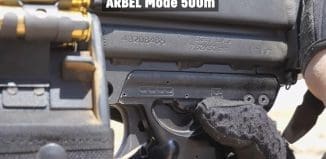Groundbreaking Approach to Minimizing Combat Vehicle Weight
This post is also available in:  עברית (Hebrew)
עברית (Hebrew)
According to the U.S. Government Accountability Office, the military spends several billion dollars each year on fuel consumption, which could be reduced by lessening the weight of ships, aircraft, ground vehicles, and cargo. Researchers at Pacific Northwest National Laboratory have developed and successfully tested a novel process – called Friction Stir Dovetailing – that joins thick plates of aluminum to steel. The new process will be used to make lighter-weight military vehicles that are more agile and fuel efficient.
To lower fuel costs and increase operational effectiveness while still maintaining the safety of military personnel, the U.S. Army Tank Automotive Research Development and Engineering Center – or TARDEC sought ways to make combat systems – such as tanks, fighting vehicles, and personnel carriers – more lightweight. One approach they are investigating is the replacement of heavy steel components with thicker, yet lighter, aluminum. But aluminum and steel cannot be welded together due to vastly different melting points, so they sought a new process to join these materials.
In woodworking, dovetails and glue are used to securely join pieces of wood together. Friction Stir Dovetailing is a similar approach for metals. Using a specially designed tool, aluminum is deformed into a steel dovetail groove to form a mechanical interlock. At the same time, the tool rubs along the bottom of the dovetail to form a thin metallurgical bond – or intermetallic compound – which “glues” the metals together within the dovetail.
The combination of mechanical interlocking and metallurgical bonding formed during a single process is the innovation that produces joints of superior strength and ductility compared to joints created by the other friction stir methods.
The researchers found that Friction Stir Dovetailing inhibits intermetallic compound overgrowth because temperature and pressure are much lower than other friction stir approaches.
The result was high strength with high elasticity of the material. The ductility can be very useful for military vehicles, according to phys.org.
The researchers plan to refine the technique and expand the process for other joint configurations. In addition to aluminum and steel, other material combinations such as aluminum to copper, aluminum to magnesium, and magnesium to steel can also be joined using Friction Stir Dovetailing.





























